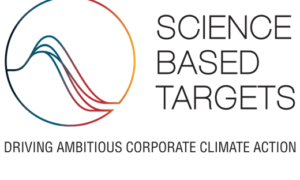The industrial HVAC market in the Asia Pacific (APAC) region is projected to expand substantially over the upcoming years. The food and beverage industry is a significant end-user, increasing the demand for industrial HVAC systems in APAC. According to World Bank data, the population in China and other APAC countries continues to rise, further fueling market expansion.
Increasing government regulations and rising energy costs are inspiring industries to minimise energy usage in their manufacturing processes. The process industry segment, which includes oil and gas, power, pulp and paper, water and wastewater treatment, chemical and petrochemical, mining and metal, pharmaceutical, and food and beverages industries, dominates the global industrial HVAC market.
Additionally, there is a growing awareness among end-users regarding energy efficiency and environmental sustainability, leading to demand for energy-efficient industrial HVAC systems in the process industry.
In the pharmaceutical industry, solid ingredients used in the formulation of pharmaceutical oral solid dosage forms can be combustible. Flammable solvents such as isopropyl alcohol, methanol, and acetone, which are used as tablet coatings, must be processed in a controlled environment. These requirements have led to the widespread use of cleanrooms in the pharmaceutical industry, which necessitates the installation of HVAC systems designed to meet these stringent standards. Moreover, the need to prevent dust-related explosions will further fuel the demand for explosion-proof HVAC systems from the food and pharmaceutical industries during the forecast period.
Industry analysis
The Industrial HVAC market is witnessing significant growth due to the increasing demand for energy-efficient climate control technologies in industrial buildings. Sustainable buildings, including residential and commercial structures, are prioritising HVAC systems to ensure thermal comfort and indoor air quality. Space cooling and heating applications are essential for industrial buildings to maintain optimal working conditions and improve the standard of living.
Climate control technologies, including thermostats, dampers, condenser fans, compressors, and evaporators are important in regulating temperature, humidity levels, and indoor air quality. The commercial sector’s infrastructure and the construction of affordable housing units further increase product demand.
Market growth
The Industrial HVAC market encompasses energy-efficient climate control technologies for industrial buildings, focusing on heating, cooling, and thermal comfort in various structures. These include residential, commercial, and industrial buildings, with unique humidity and ambient temperature requirements. According to Technavio, the global industrial HVAC market size is estimated to grow by USD 6.81 billion from 2025 to 2029. The market is expected to grow at a CAGR of 7.9 percent during the forecast period.
HVAC systems are essential for maintaining comfortable indoor environments, ensuring good indoor air quality, and adapting to construction activities driven by rapid urbanisation and housing unit development. Key factors shaping the market include energy efficiency, HVAC industry consultants, maintenance, repair, and installation costs, system failures, replacement parts, and IoT-enabling Smart HVAC systems.
The construction, residential and industrial sectors are significant markets for HVAC infrastructure. Rapid urbanisation and the need for affordable housing units, commercial infrastructure, and maintaining a standard of living drive product demand.
Energy-efficient products, such as heat pumps and programmable thermostats, are increasingly popular due to tax rebates, federal tax credits, and energy-saving incentives. Industries such as hospitals, shopping malls, restaurants, commercial construction, and defence, electronics, automotive, and mobility sectors rely on HVAC systems for their operations. Energy-efficient cooling systems, product lines, and new product launches are essential for meeting the evolving needs of these industries.
The HVAC industry faces challenges such as a lack of awareness, education, and affordability, particularly in emerging markets. Training programs, financing options, and cost-effective solutions are essential for driving growth in the market. HVAC regulations, environmental hazards, and carbon footprints are also important considerations for the industry.
Cookie Consent
We use cookies to personalize your experience. By continuing to visit this website you agree to our Terms & Conditions, Privacy Policy and Cookie Policy.















